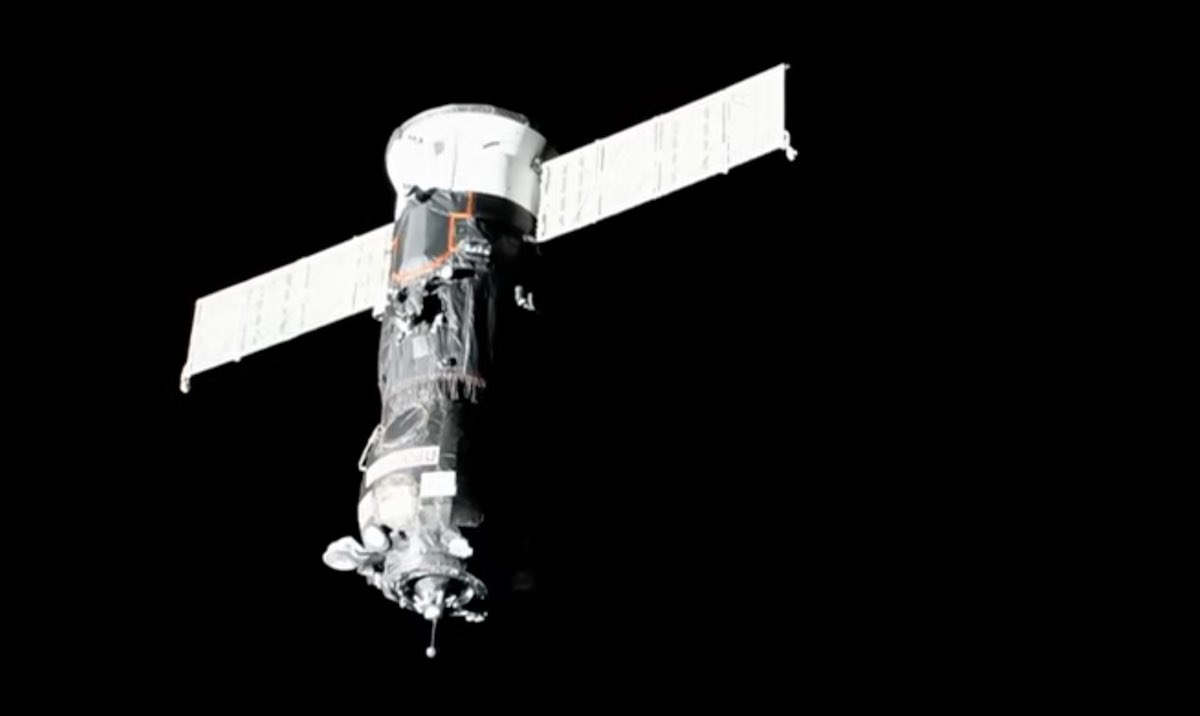
Russia’s automated Progress MS-17 cargo ship docked with the International Space Station Thursday, wrapping up a two-day journey from the Baikonur Cosmodrome in Kazakhstan with nearly 2.7 tons of fuel, food, water, and supplies.
The Progress cargo craft linked up with the space station’s Poisk module at 8:59 p.m. EDT Thursday (0059 GMT Friday).
The unpiloted supply freighter launched from Baikonur at 7:27 p.m. EDT (2327 GMT) Tuesday atop a Soyuz-2.1a rocket. Since then, the cargo craft completed a series of orbital maneuvers to match the altitude of the space station, setting up for a radar-guided rendezvous Thursday.
The spacecraft lined up with the approach corridor for the Poisk module and moved in for docking as the space station soared more than 250 miles over the southeast Pacific Ocean.
The Progress spacecraft’s pressurized compartment is loaded with 3,326 pounds (1,509 kilograms) of dry cargo, including hardware, research investigations, crew supplies, life support equipment, and other provisions, according to Roscosmos, the Russian space agency.
The Progress MS-17 spaceship also delivered deliver 1,036 pounds (470 kilograms) of propellant to refuel the propulsion system on the space station’s Russian segment, Roscosmos said. The freighter’s tanks are filled with 926 pounds (420 kilograms) of water for the crew aboard the space station. There’s also 89 pounds (40.5 kilograms) of air to replenish the atmosphere inside the research complex.
The mission’s total cargo and fuel load comes to 5,377 pounds (2,439 kilograms), according to Roscosmos.
Cosmonauts Oleg Novitskiy and Pyotr Dubrov monitored the Progress spacecraft’s automated rendezvous and docking, ready to take over remote control of the spaceship if necessary. But the Progress craft’s Kurs rendezvous radar and autopilot system performed as expected Thursday.
The mission marks the 78th launch of a Progress supply ship to the International Space Station since 2000. The Progress MS-17 spacecraft will remain at the space station until November, when it will depart and head for a destructive re-entry over the Pacific Ocean to dispose of trash.
Email the author.
Follow Stephen Clark on Twitter: @StephenClark1.
